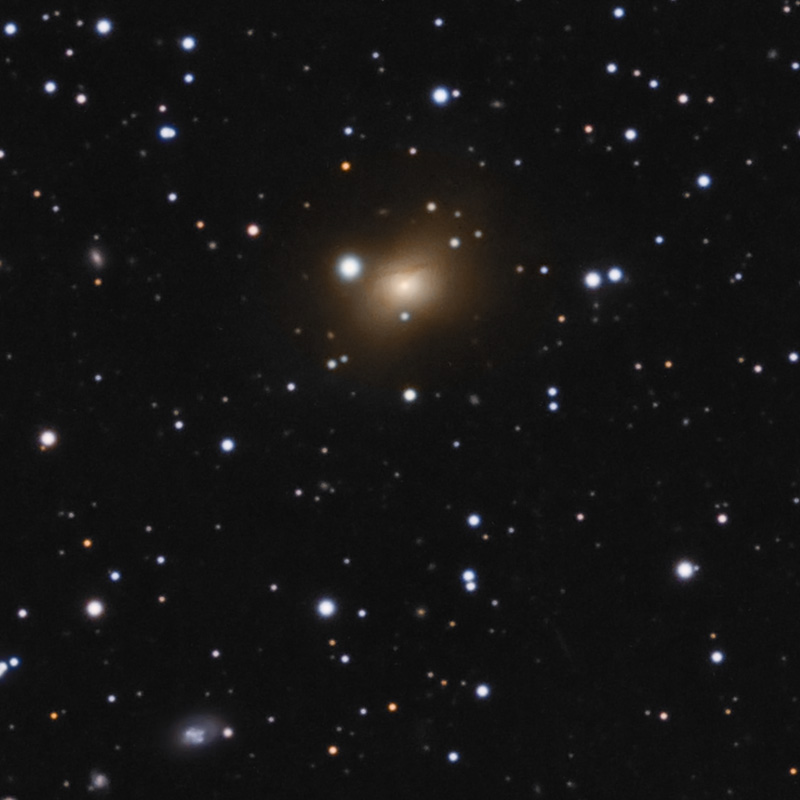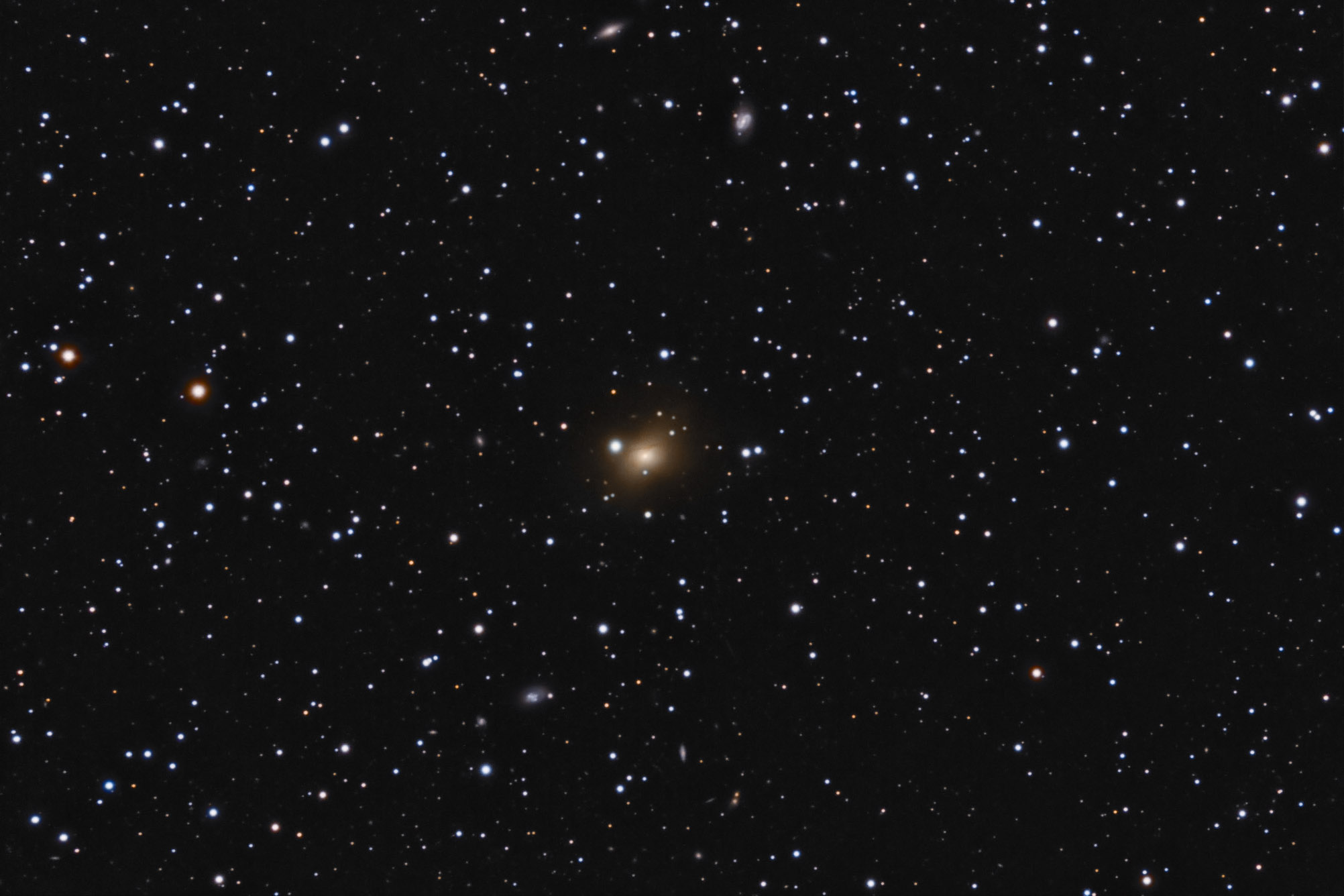| Description | Images |
Object name: IC0171Designation(s): IC0171, IC 174 is a strange elliptical galaxy in Triangulum about 230 million light-years distant. It has a very strange red dust lane and is quite irregularly shaped with plumes going in several directions. My 60 minutes of time wasn't enough to show them very well. I took three times this data but it was so poor it made the image worse rather than better so wasn't used. Someone with better skies likely can show the plumes better. I found no reference to the dust lane and only an understated comment in the UGC saying "Complex center, slightly asymmetric envelope." That seems to ignore the plumes. I agree the core region has some interesting structure not normally seen in elliptical galaxies. In all, I'd think this is a likely the result of one or more rather large galaxies it has consumed. Though I found nothing in the literature about it. A single non-redshift measurement using the Fundamental Plane system to determine distance comes up with 210 million light-years. Rather good agreement yet the method assumes the galaxy is quite symmetrical in its mass distribution. Since that might not be the case here either it means these plumes have little mass and the vast majority of the galaxy is symmetrical or the method just got lucky. Probably the former is the case. Related Designation(s):2MASS J01551019+3516548, 2MASX J01551021+3516550, 2MASXi J0155102+351654, ABELL 0262:[WCB96] E, CAN 014 NED05, CGCG 0152.3+3502, CGCG 522-064, GIN 109, IC 0171, IC0171, LDCE 0115 NED030, LGG 037:[G93] 030, MAPS-PP O_1225_0478004, MCG +06-05-050, PGC 007139, UGC 01388, USGC U081 NED20, UZC J015510.2+351654, [SLH97] A09029, |


